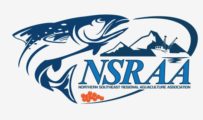
Crawfish Inlet is NSRAA’s latest chum salmon program to come online. This year is the first year for 4 year olds from a 13 million fry release (’15) and the second year for 3 year olds from a 27 million fry release (’16). Survival on both these broodyears has been quite high.
The return so far has included 100,000 troll caught chum, 220,000 cost recovery chum, and 150,000 common property seine caught chum for a total of 470,000 fish. This doesn’t count Crawfish chum caught in Redoubt, Sitka Sound or Deep Inlet. The preseason estimate was 680,000 chum, although it appears that will be low. Probably closer to 800,000.
The NSRAA board voted to have a troll preference at Crawfish for the 2018 and 2019 seasons. The intent of the policy is to maximize troll opportunity, while meeting the permit mandate to mop up the bay once each week with cost recovery for 2018. Due to the larger return, I thought it prudent to have a seine fishery in Crawfish before being overwhelmed with chum salmon. As it turned out the cost recovery boats were able to keep the inlet cropped down fairly well, although the day after cost recovery, Sunday August 19th 1.2 million pounds were harvested in the fishery.
Silver Bay Seafoods won and was awarded the bid to harvest all the chum in Crawfish Inlet that were not harvested by the troll fleet. Therefore, in order to allow for the Sunday fishery I discussed the idea with the NSRAA executive committee and then with SBS, who agreed to forego cost recovery for the Sunday opening. Cost recovery will continue on August 20 & 21 and through the end of the run. There will be no further seine openings unless something unforeseen occurs.
Troll fishing has been phenomenal in West Crawfish Inlet especially, but also in Cedar Pass and the outer part of Crawfish Inlet. Catch rates are higher than I have ever heard before. Currently there are about 60 trollers fishing primarily in West Crawfish. It appears the majority of the chum come off the ocean and swim up West Crawfish, perhaps due to its deep channel and lack of a shelf at the entrance like Crawfish Inlet. Some fish hold in Shamrock Bay, others make the turn into Cedar Pass, while others enter Crawfish through Middle Passage and Walker Channel. What we have found no matter which way the fish enter, they eventually back out of the inlets, bays, and coves and make there way to the head of Crawfish Inlet where they were reared as fry.
The return so far has been roughly 80% male (probably driven by age 3 fish abundance); age structure is 65% age 3 and 35% age 4. Fish size is 8.5 to 9.5 lbs which is rather large considering the 65% age 3 fish.



 RSS - Posts
RSS - Posts
Recent Comments